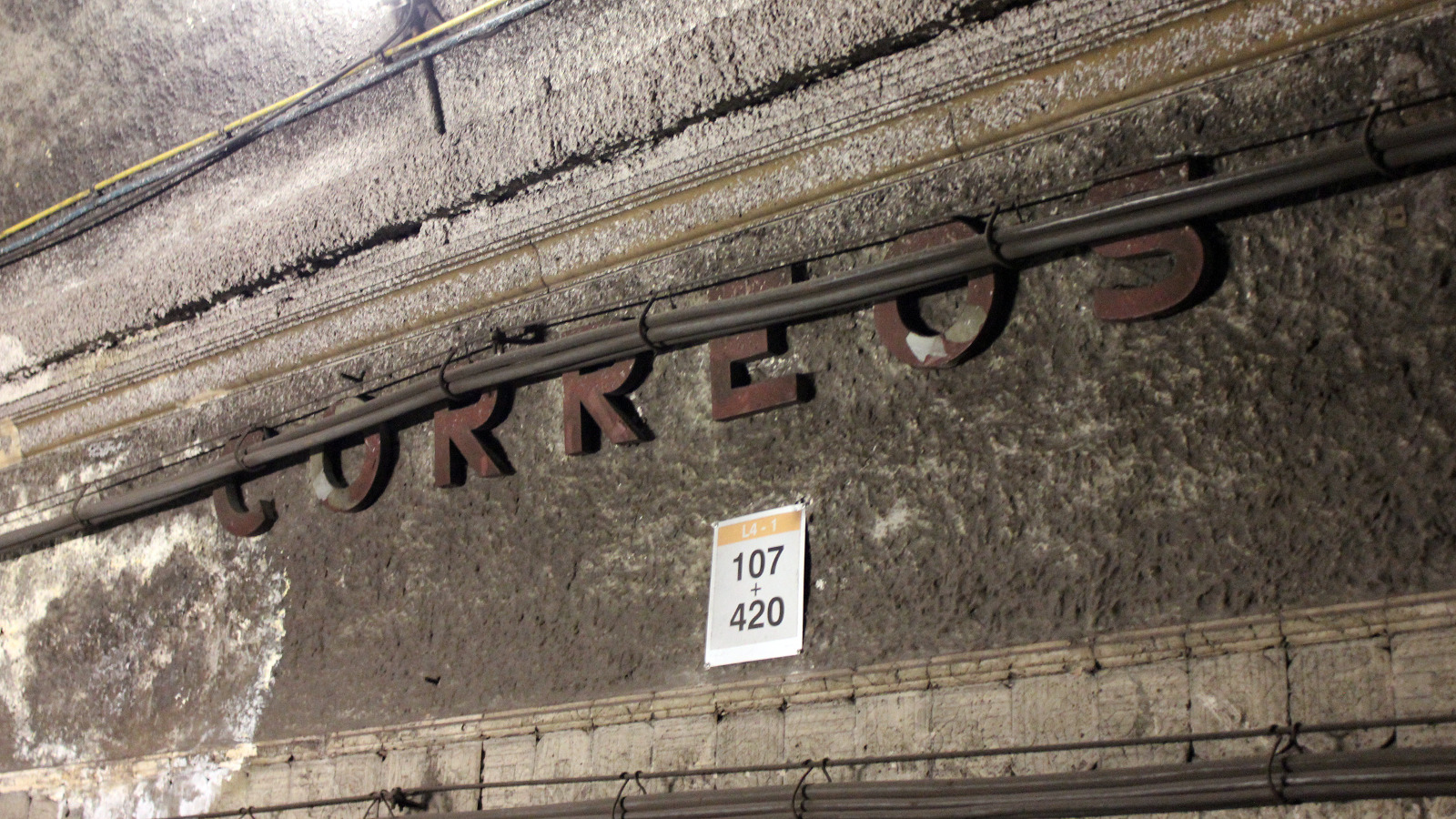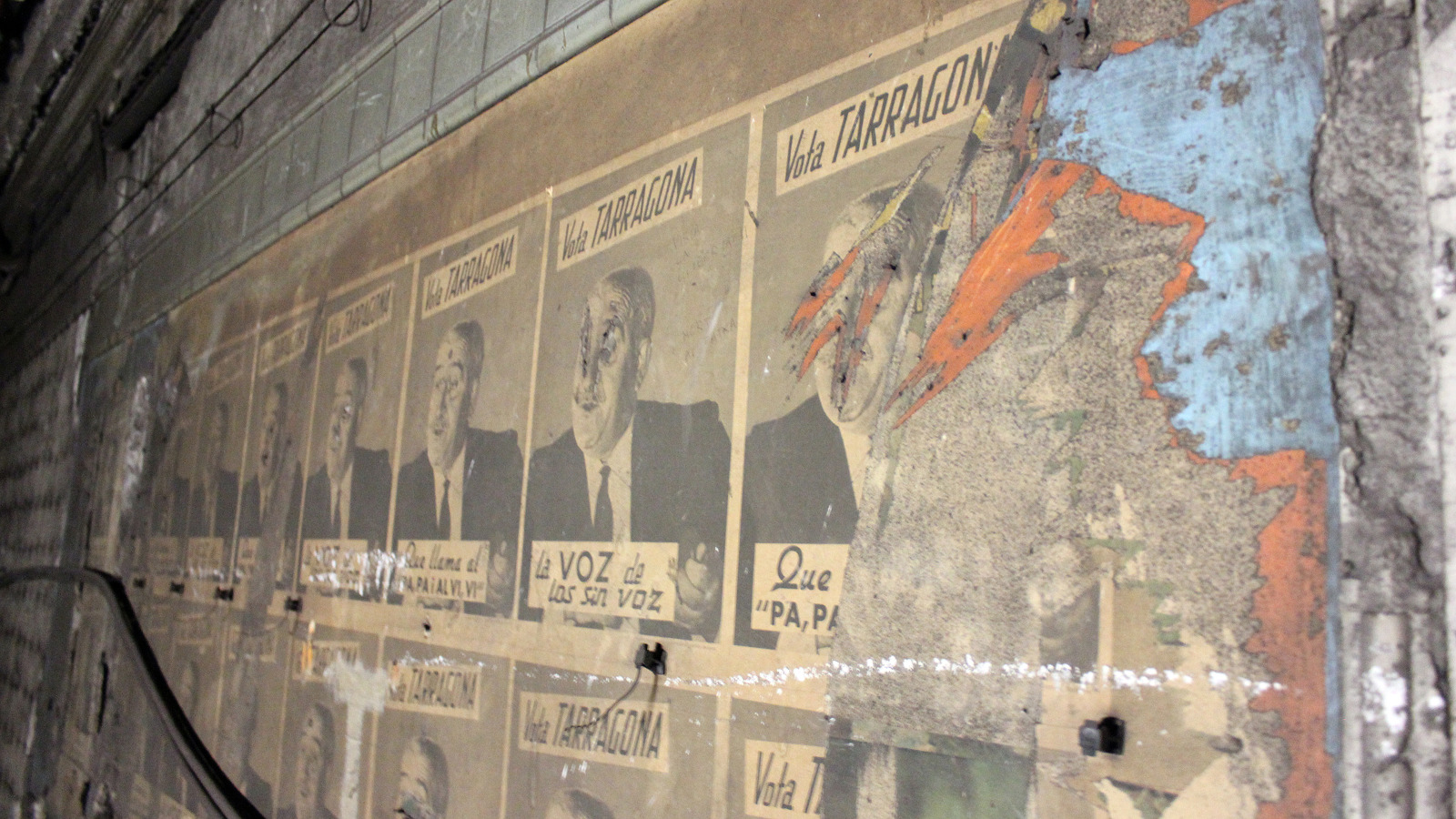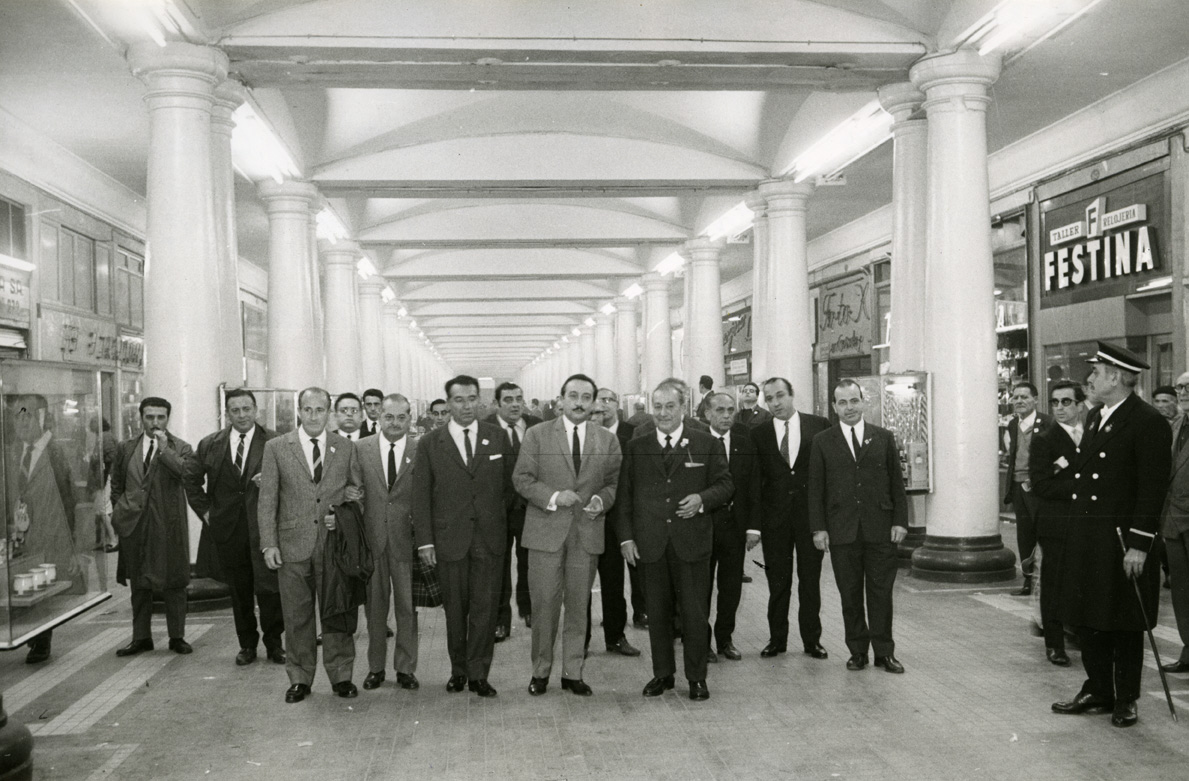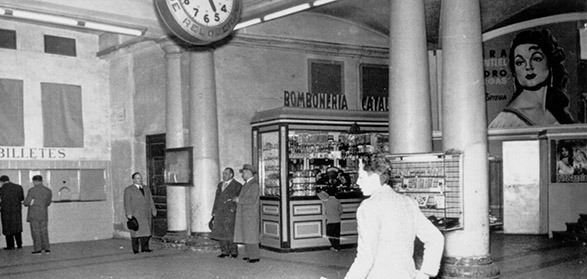Ghost stations of Barcelona’s metro and the historic underground shopping center
The Catalan capital has various unused subway stops, while Avinguda de la Llum was once the most vibrant social hub of the city

Barcelona’s medieval walls prevented – or at least complicated – a number of attacks over the centuries until its demolition in the 1850s. But even after being removed, those historic walls fulfilled one last purpose a century later: contributing to today’s underground tunnels and creating a mythical metro station named after a legendary architect: ‘Gaudí’.
The original works to build the L2 between Horta and Sagrada Família advanced at a good pace, but those between Parallel and Sagrada Família in the late 1960s had more problems as the machine used to build the underground tunnel had to clear the remains of an old foe in the district of Sant Antoni: the old city walls.
This delay forced authorities to change plans and dedicate the Horta-Sagrada Família route to the L5, pushing the L2 line south-east towards the Besòs river. In the end, all worked out nicely, but one station which was ready to be inaugurated suddenly became pointless as the L2 would need a new station beneath the unfinished basilica and the so-called Gaudí station was just a block away.
No trains have ever stopped in Gaudí – except for some very occasional visits to fulfil the curiosity of urban legend lovers – although it is fully constructed. According to Oriol Pàmies, who works for the metro network managing company TMB, L5 commuters between the stops Sagrada Família and Sant Pau Dos de Maig cannot even see the Gaudí station if its lights are off.
The platform has occasionally been used for advertising, while its hall, beneath the intersection of the streets Rosselló and Lepant, is home to some metro-related associations and a TMB conference room.
Gaudí is the most ‘glamorous’ of Barcelona’s so-called ghost stations because it is the only one fully built, although TMB makes clear to Catalan News that nothing can be further from the ‘glamour’ some people dream about.
Correus and Ferran are other facilities labeled as 'ghost stations', and in these cases, this name makes more sense since they were once functional metro stations until their use was no longer viable, but their remains still exist below the ground.

Ferran was probably doomed from its beginning. Its short-lived story of only 22 years owes to the fact that it was barely 100 meters from the Liceu station on the modern-day L3 line. Who could compete against a stop just outside the temple of the bourgeoisie located right in the middle of La Rambla?
What’s more, when the L3 line was expanded to the end of the famous boulevard towards the sea, Ferran was not deemed useful and closed in 1968, but not without some public complaints, as Gustau Lamadrid points out.
As for Correus, situated at the very end of Via Laietana close to the sea beneath where the post office still stands today, it was in operation between 1934 and 1972 until the L4 line was extended to Barceloneta. According to Lamadrid, one of its platforms was only 1.84m (6ft) wide, which would have made it hard to use in the 21st century anyway.

Additionally, it had only one floor because the leaks of seawater during construction led engineers to think shutting it down was wisest and only part of the facility remains today, including old ads and a Franco-era sign reading ‘Correos’ and other advertising from the time as well as some political campaign posters.




This station – and the current L4 – ran beneath Via Laietana because a tunnel had been built under this avenue in the early 20th century after part of the medieval city was demolished.
Banc is the last ‘ghost’ station under the Catalan capital’s soil. Also below Via Laietana, this station was only partially built during the construction of the tunnel that no one even knew at the time what it was being dug for. The underground managers always saw it was too close to other stations that ended up becoming today’s Jaume I and Urquinaona stations, on the L4 line.

Banc never even existed, but some partially carried out works can be seen, including a stairway that leads nowhere. Yet, some years later an urban legend surrounding it spread: the station was beneath the Bank of Spain, which moved to Via Laietana in 1933, and some said that Banc was part of a secret plan for the metro company to send their revenues safely to the financial institution. Although it all sounds fascinating, unfortunately, historians categorically rule it out.
Visits to any of these ghost stations must be done through the tunnels where trains currently run. They can only be done at night while there is no metro service, but some further conditions make it impossible “in the short term” to organize any tours at the moment, TMB says.
Barcelona’s vibrant underground social hub
Yet, visits were once commonplace to another underground site packed with intrigue.
After the civil war, 1936-1939 Barcelona was a grey, dark, and sad place following a brutal systematic bombing campaign from fascist forces. There was little to speak of in terms of social life in the city.
But, very soon, businessman Jaume Sabaté spotted an opportunity.

In 1929, the FGC train line between Plaça Catalunya and the then-separate town of Sarrià was sunk underground. Before this, it had been an overground train ever since 1863 - the same year that the world’s first underground passenger railway opened up in London.
After the line was brought beneath the soil, the space where the old vestibule lay was left dormant during the 1930s. Sabaté had the idea of transforming this space into Europe’s first underground shopping center, and in 1940, Avinguda de la Llum was opened.


Today, the Roman-style columns at the entrance of Avinguda de la Llum can still be seen standing in the Plaça Catalunya FGC station below Carrer Pelai.
The 175 meter-long, 10 meter-wide commercial space boasted a total of 75 different shops and very quickly became a beloved hang-out spot for Barcelona locals. Given how grim and ruinous the city above ground had become, people went to Avinguda de la Llum (‘Avenue of Light’) “in search for a bit of light and color,” CultRuta tour guide Manuel Marina explains to Catalan News.
Avinguda de la Llum quickly became one of the most vibrant social hubs in the city where people would spend their free time gazing at the latest technology, such as vacuum cleaners, blenders, televisions and more on sale in the shops.
The Granja bar, also known as ‘bar de los donuts’ became the default spot to wait for anybody who missed their train. There was also a chip shop, a locale for the Center for Culture and Knowledge (CCC), and even a cinema that still exists in the train station but is no longer used and not open to the public.


“There were public showers here too, because back then people didn’t shower at home,” Marina explains. “Back then, people worked on Saturday mornings, got their week’s wages, and then in the evening came here to clean up and make themselves beautiful.”
Jaume Sabaté had plans to turn the “avenue” of light into a full “city”, with ambitious plans to expand the underground facility from Urquinaona to Universitat. The project even planned for a sports stadium beneath Plaça Catalunya with an Olympic swimming pool. However, these plans fell through, and the Avinguda de la Llum was never extended any further.
However, the good times were not to last. By the 1960s, other shopping malls began to open in other points of the city, and gradually the shops in Avinguda de la Llum began to shut down. As its popularity and use declined, antisocial behaviour rose. Homeless people began to sleep there, and Marina says it started to become a “scary” place for a lot of people.
By 1990, the city council took the decision to close the once-iconic commercial area. Nowadays, the majority of the space that once was Avinguda de la Llum is where the Sephora store is in the El Triangle shopping area by Plaça Catalunya sits.
Today, thousands of people pass by the old Roman-style columns every day without realising how important Avinguda de la Llum was in the social lives of their parents and grandparents.